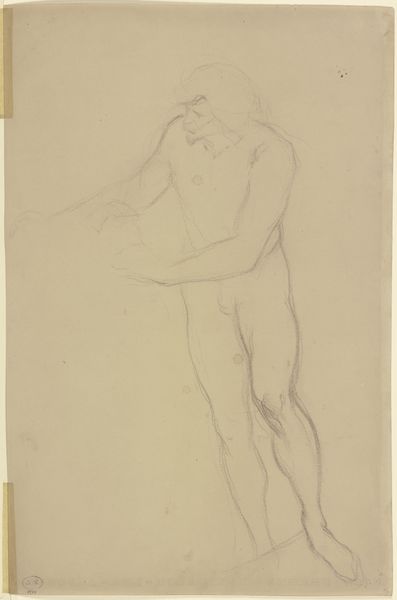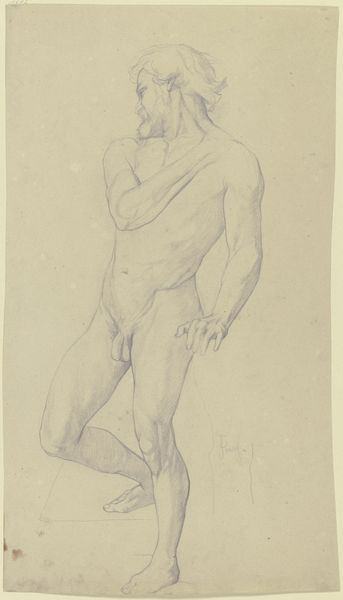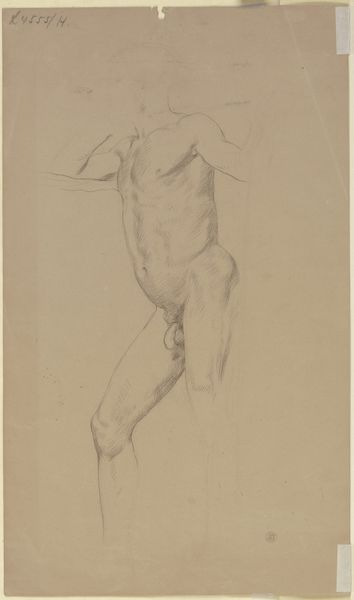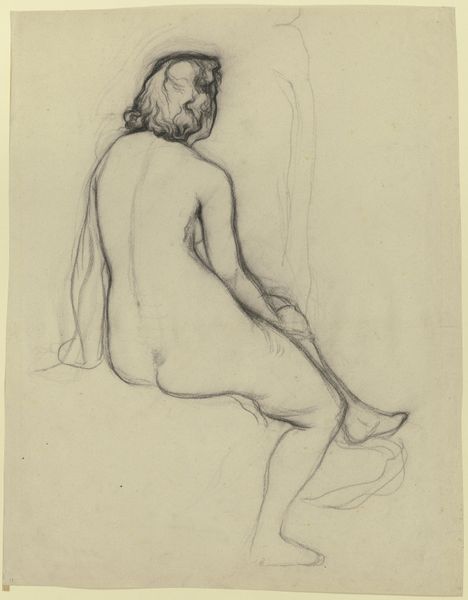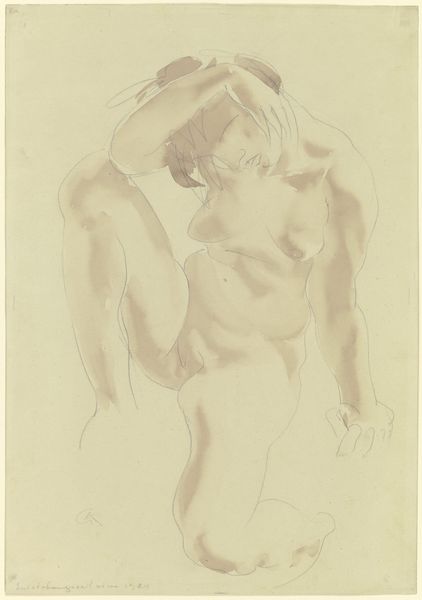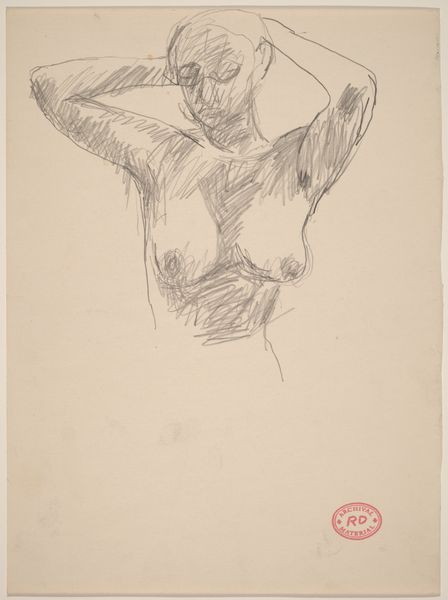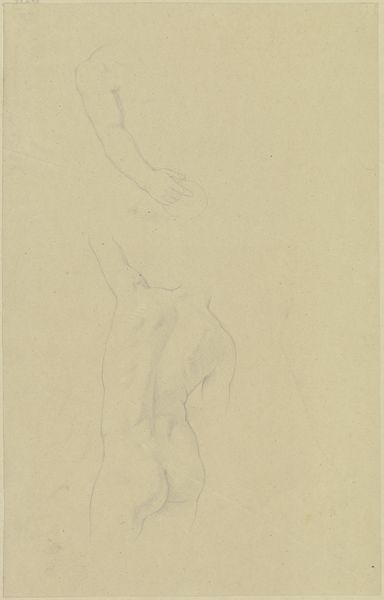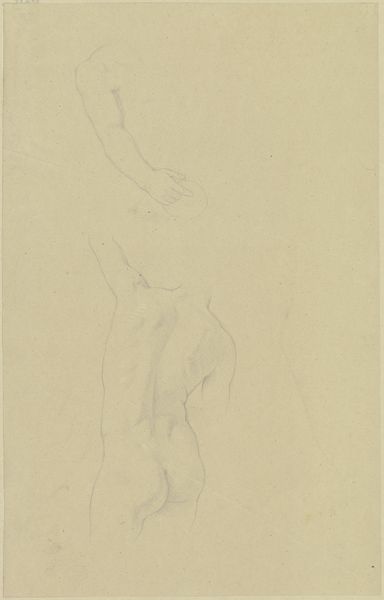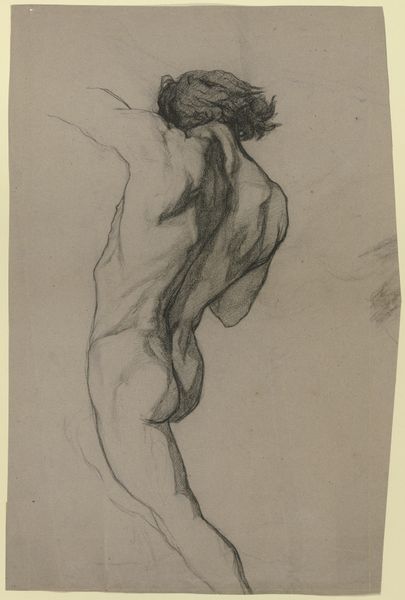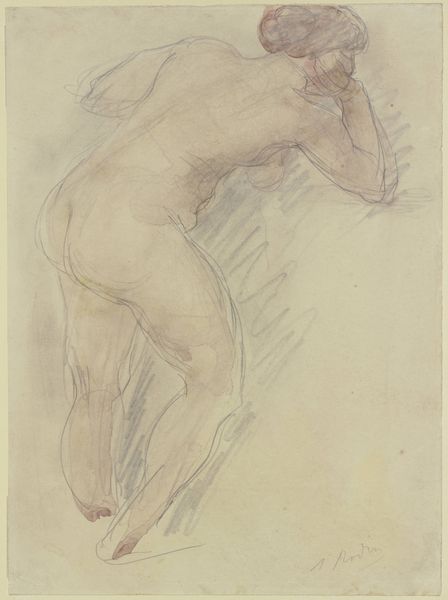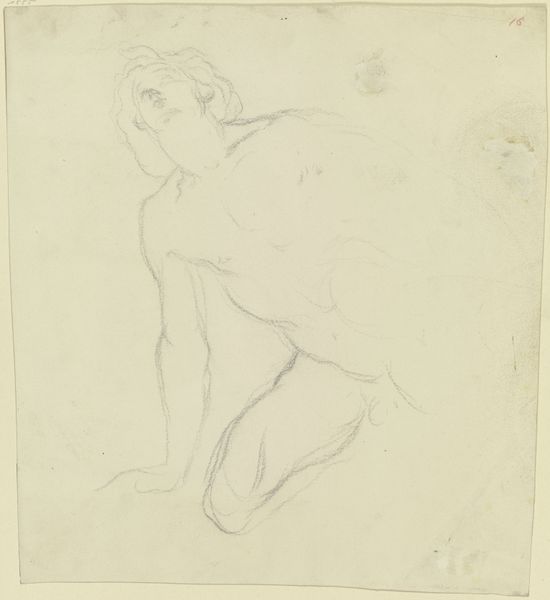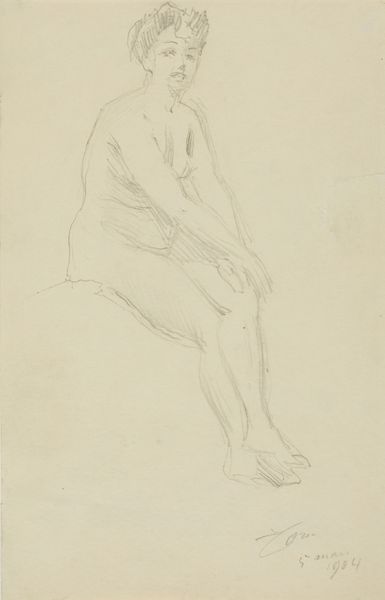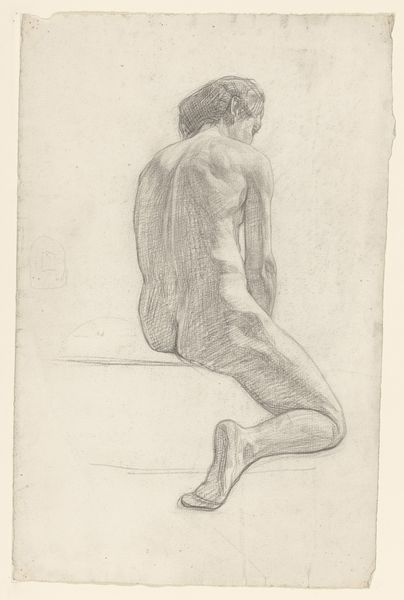
drawing, paper, pencil
#
portrait
#
drawing
#
16_19th-century
#
pencil sketch
#
paper
#
pencil
#
academic-art
#
nude
Copyright: Public Domain
Victor Müller made this nude drawing in graphite on paper, but it's the paper itself that really commands our attention. Notice its tone. It isn't a bright, pristine white, but rather a muted beige. This suggests it was made from pulped rags, a lower-cost alternative to the all-wood paper that was becoming available in Müller's time. Graphite, too, was becoming more widely accessible, thanks to new mining operations and industrial manufacturing. The combination of these two materials implies a certain democratization of art during the Industrial Revolution. But there's something else to note: the ripped corner. This little imperfection speaks volumes. Was it torn intentionally, or was it simply a casualty of time? It reminds us that art doesn't exist in a vacuum, but rather is subject to the wear and tear of real life. It's a reminder that even the most carefully crafted artwork is ultimately just a material object, subject to the same forces of entropy as everything else.
Comments
No comments
Be the first to comment and join the conversation on the ultimate creative platform.
